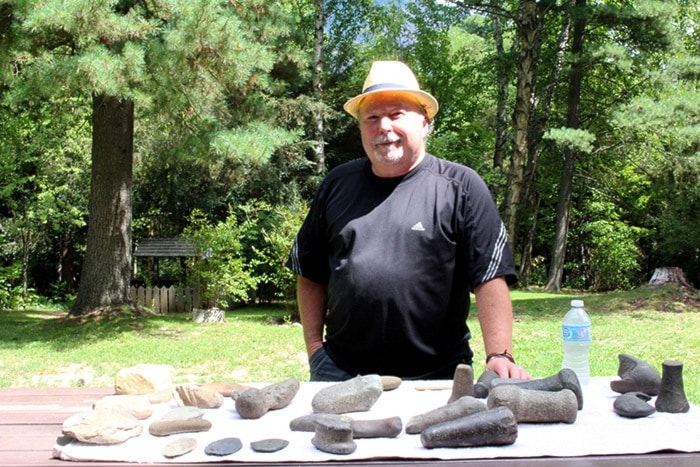Chelsea Novak
Castlegar News
Thursday afternoon William Franklin stood at a picnic table outside the chapel house on Zuckerberg Island with what at first looked like a number of rocks spread in front of him.
But they aren’t just rocks, they’re Indigenous artifacts and on closer inspection have been crafted into tools and ornaments.
Franklin is a retired archeologist, museum curator and history teacher visiting from Kelowna. He accompanied his wife on a trip to Castlegar, and wound up volunteering his time at the museum, where he’s been authenticating Indigenous artifacts in its collection.
“What we have is quite a wide timeline represented, and various locations, from the Pacific to the mid-continent,” he said, as he motioned to the collection on the table.
Franklin explained that such a wide geographical range isn’t uncommon in Indigenous collections, as Indigenous peoples often traded with each other.
The museum’s collection includes a sinker—used to secure fishing nets—made from sedimentary rock, which is the easiest to craft.
It also includes objects made from igneous stones, which is much harder to work.
“That would involve pecking with a hard stone, until you got the object you wanted, and then smoothing and polishing it,” explains Franklin.
Among the objects made from igneous rock were a number of pestles for grinding things.
But sometimes a rock is just a rock, and a few of the “artifacts” in the collection fall into that category.
On the other hand, Franklin identifies three of the artifacts as especially old and prized. One is a piece of jewelry—a gorget—made from soap stone. The other two are hide scrapers.
Franklin explains that older hide scrapers tend to be larger and more crudely made, whereas more recent ones are smaller and finer.
“These are fairly crudely worked, so they could be as old as 1500 years before present,” he said.
